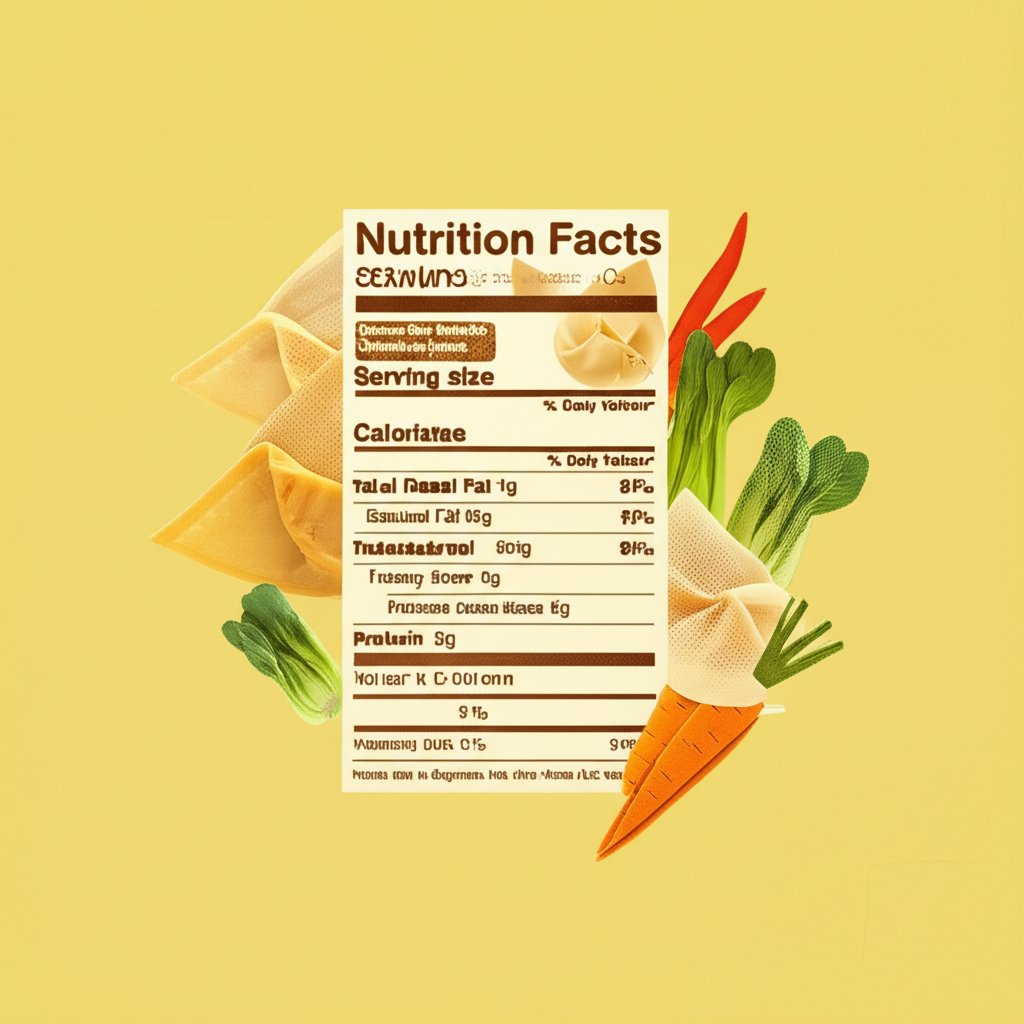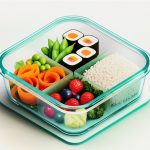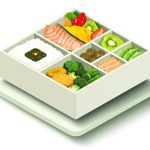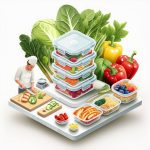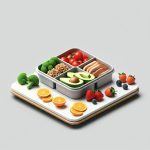Craving that crispy, savory goodness of wontons? Before you dive in, understanding the nutrition facts of wonton wrappers can help you make informed choices, whether you’re watching calories, carbs, or sodium. Let’s break down what’s actually inside those little squares of dough.
At a glance:
- Wonton wrappers are typically low in calories and fat, making them a lighter alternative to some other types of dough.
- They are primarily composed of carbohydrates, with a moderate amount of sodium.
- The specific nutritional profile can vary slightly depending on the brand and ingredients used.
- Consider the fillings and cooking method, as these will significantly impact the overall nutritional content of your wonton dish.
- Pay attention to serving size to accurately track your intake.
- Homemade wonton wrappers offer more control over ingredients and nutritional value.
What Are Wonton Wrappers Made Of?
Wonton wrappers are traditionally made from wheat flour, water, eggs, and salt. These simple ingredients combine to create a thin, pliable dough perfect for wrapping savory or sweet fillings. However, some commercially produced wrappers may include additional ingredients like cornstarch or preservatives. The exact composition influences the final nutrition facts of wonton wrappers.
Nutrition Facts Wonton Wrappers: A Closer Look
Let’s examine a typical serving (around 5-6 wrappers, or about 28g) of commercially prepared wonton wrappers:
- Calories: Approximately 80-100 calories
- Total Fat: 0-1 gram
- Saturated Fat: 0 grams
- Cholesterol: 0-15 milligrams (depending on egg content)
- Sodium: 100-200 milligrams
- Total Carbohydrate: 15-20 grams
- Dietary Fiber: Less than 1 gram
- Sugars: Less than 1 gram
- Protein: 2-3 grams
These values can fluctuate depending on the brand and size of the wrapper. Always check the packaging for specific nutrition information. To put this into perspective, you can compare these values with another common food item. Explore Rice Krispies Nutrition and see how the nutritional profile contrasts with that of wonton wrappers.
The Impact of Fillings and Cooking Methods
The nutritional content of your final wonton dish depends heavily on the filling and cooking method you choose.
- Fillings: High-fat meats, cheeses, and sauces will significantly increase the calorie and fat content. Opt for lean proteins like chicken or shrimp, vegetables, and herbs to keep things lighter.
- Cooking Methods: Deep-frying wontons adds a significant amount of fat and calories. Steaming, boiling, or pan-frying with a minimal amount of oil are healthier alternatives.
For example, a steamed shrimp wonton with vegetables is significantly lower in calories and fat than a deep-fried pork wonton.
Sodium Content: A Consideration
Wonton wrappers can be relatively high in sodium. If you’re watching your sodium intake, be mindful of the amount you use.
- Choose low-sodium brands: Some brands offer reduced-sodium wonton wrappers.
- Make your own: Homemade wrappers allow you to control the amount of salt.
- Pair with low-sodium fillings: Balance the sodium content of the wrappers with low-sodium ingredients in your filling.
Homemade vs. Store-Bought: Nutritional Differences
Making wonton wrappers from scratch gives you greater control over the ingredients and nutritional profile. Here’s a comparison:
| Feature | Store-Bought Wonton Wrappers | Homemade Wonton Wrappers |
|---|---|---|
| Ingredients | May contain preservatives, added sodium | Fresh, controllable ingredients |
| Sodium Content | Generally higher | Can be adjusted to your preference |
| Cost | Usually more affordable | May be more expensive depending on ingredients |
| Time | Ready to use | Requires time and effort |
| Choosing homemade allows you to use whole wheat flour for added fiber or reduce the amount of sodium. |
Wonton Wrappers and Dietary Needs
- Gluten-Free: Traditional wonton wrappers are not gluten-free because they are made with wheat flour. Look for gluten-free alternatives made with rice flour or other gluten-free flours.
- Vegetarian/Vegan: Most wonton wrappers are vegetarian, but you should always check the ingredient list to ensure no animal products (like lard) are used. Vegan wonton wrappers will omit the egg.
Wonton Wrapper Alternatives
If you’re looking for lower-carb or gluten-free options, consider these alternatives:
- Lettuce Wraps: Use large lettuce leaves as a wrapper for fillings.
- Rice Paper Wrappers: A gluten-free and lower-calorie alternative.
- Cauliflower Wrappers: For a very low-carb option, experiment with cauliflower-based wrappers (though these are less common).
Practical Playbook: Minimizing the Impact
Let’s translate this into actionable steps you can use when planning your meals:
- Choose your filling wisely: Prioritize lean proteins, vegetables, and herbs. Avoid high-fat meats, creamy sauces, and excessive cheese.
- Opt for healthier cooking methods: Steaming, boiling, or pan-frying with a small amount of oil are better than deep-frying.
- Control portion size: Be mindful of how many wontons you’re eating. Stick to a reasonable serving size (e.g., 5-6 wontons).
- Balance your meal: Serve wontons with a side of steamed vegetables or a salad to increase your fiber intake and overall nutritional balance.
- Homemade options: Try making your own wonton wrappers to control ingredients and nutritional content.
Quick Answers: Your Wonton Wrapper Questions Answered
Q: Are wonton wrappers healthy?
A: On their own, wonton wrappers are relatively low in calories and fat. However, the overall healthiness of a wonton dish depends on the filling and cooking method.
Q: Can I use wonton wrappers for other recipes?
A: Absolutely! Wonton wrappers are versatile and can be used for various dishes, including ravioli, baked chips, and even miniature pizzas. Get creative!
Q: How do I store leftover wonton wrappers?
A: Store leftover wrappers in an airtight container in the refrigerator to prevent them from drying out. They can typically be stored for 2-3 days. You can also freeze them for longer storage.
Q: Are there any nutrient-rich wonton wrapper recipes?
A: Yes! Incorporating vegetables like spinach, mushrooms, and carrots into your wonton filling will increase the nutrient density of the dish.
Q: How can I reduce the sodium in my wonton dish?
A: Use low-sodium soy sauce, broths, and other ingredients in your filling. Avoid adding extra salt.
Wonton Wrapper Decision Tree: Making the Best Choice
Here’s a quick guide to help you make informed decisions when choosing and preparing wonton wrappers:
Start –> Are you watching calories?
|
Yes –> Choose steamed or boiled wontons with lean fillings. Portion control.
|
No –> Continue
|
Are you watching sodium?
|
Yes –> Choose low-sodium wrappers or make your own. Use low-sodium ingredients.
|
No –> Continue
|
Gluten-free?
|
Yes –> Choose gluten-free wrappers made with rice flour.
|
No –> Continue
|
Choose your filling and cooking method. Enjoy!
Actionable Close: A Wonton Wrapper Quick Start
Understanding the nutrition facts of wonton wrappers empowers you to enjoy your favorite dishes without sacrificing your health goals. By choosing lean fillings, healthier cooking methods, and controlling portion sizes, you can create delicious and nutritious wonton meals. Experiment with homemade options for greater control over ingredients and nutritional content. Now, go ahead and whip up some tasty wontons with confidence!
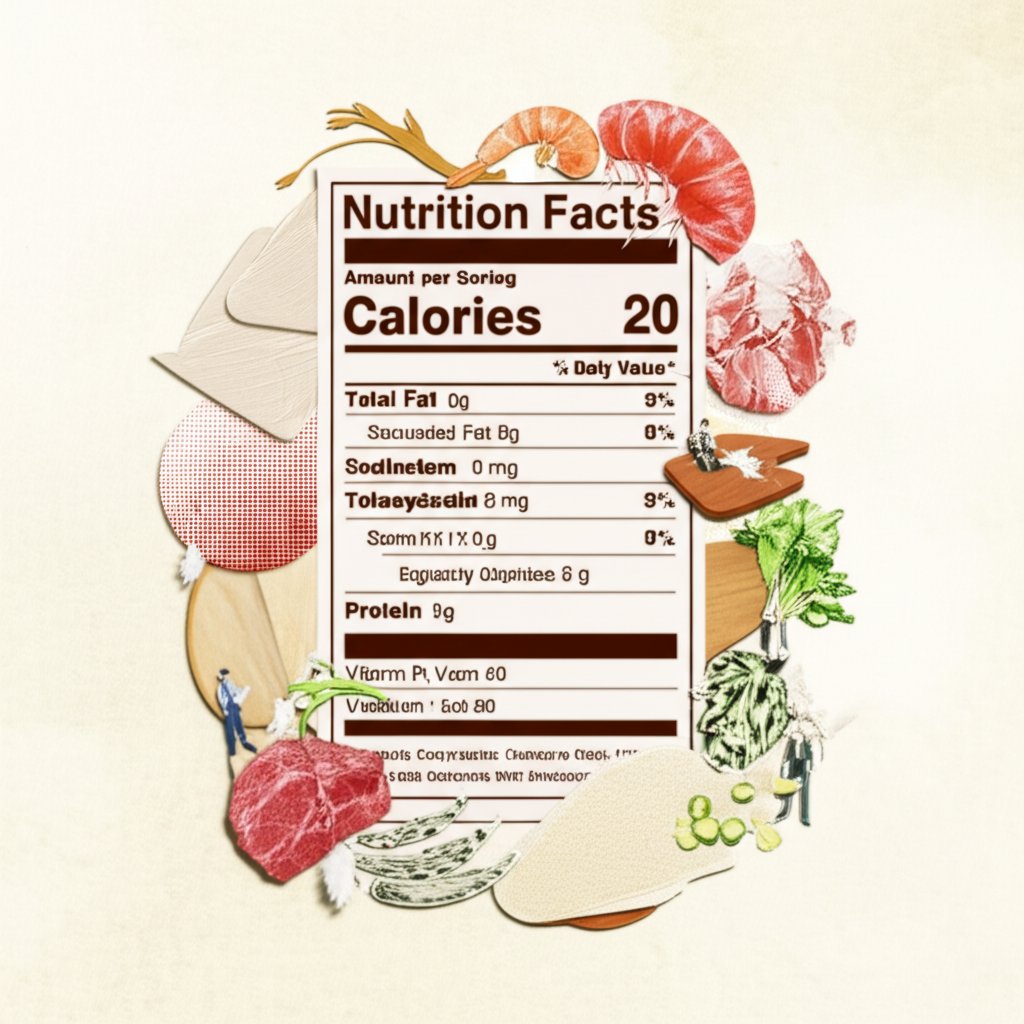
- How Glass Bento Box Containers Make Meal Prep Easier - December 18, 2025
- Why Glass Boxes for Lunch Are Trending for Meal Prep - December 17, 2025
- Bento Box Glass Offers Practical, Eco-Friendly Meal Storage - December 16, 2025
